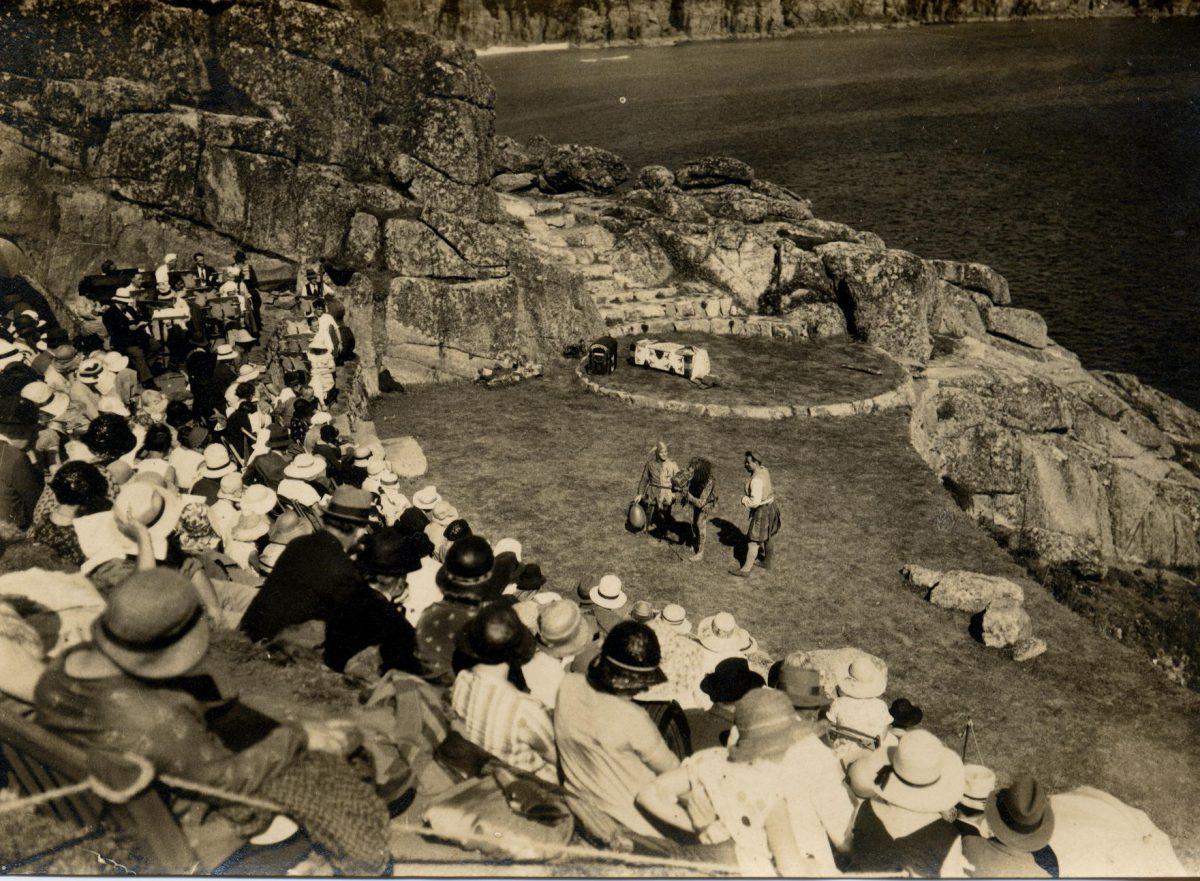Be not afeard. The isle is full of noises, Sounds, and sweet air, that give delight and hurt not Sometimes a thousand twangling instruments Will hum about mine ears, and sometime voices.— from Shakespeare’s “The Tempest”
Caliban, in Shakespeare’s “The Tempest,” talks to Stephano and Trinculo about the mysterious music that wafts around the island. On Aug.16, 1932, “The Tempest” was the first production put on at The Minack Theatre in Porthcurno, Cornwall, in England. As this very scene was acted out on The Minack’s stage, lit by batteries and car headlights, Caliban’s words could well have mimicked the audience’s experience of the show, or any produced at The Minack. For The Minack Theatre’s stage is set by—or some might even say, on—the sea.
Ladies and gentlemen watch "The Tempest" in 1932, the first performance on The Minack Theatre's stage. The Minack Theatre






